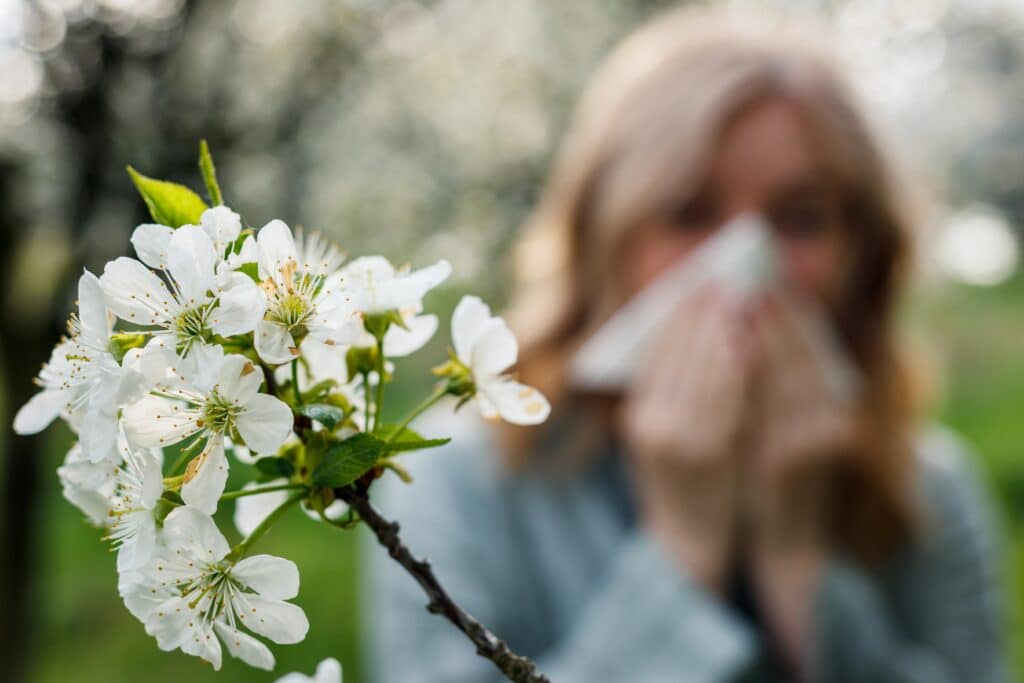Allergist Chicago,Allergy Chicago

As urbanization and climate change evolve, so does the impact of environmental
allergens on public health. Cities like Chicago, with a dense population and a mix of
urban and suburban areas, are particularly vulnerable to airborne allergens, known as
aeroallergens. Understanding sensitization rates to aeroallergens can help city
planners, healthcare providers, and residents better manage and mitigate the impact of
seasonal allergies and respiratory health issues.
What Are Aeroallergens?
Aeroallergens are airborne particles that trigger allergic reactions in sensitive
individuals. These allergens commonly include pollen from trees, grasses, and weeds,
as well as mold spores and household dust mites. Seasonal peaks in aeroallergen
levels can lead to heightened allergy symptoms and other respiratory issues like
asthma, which are especially prevalent in urban areas where pollution can exacerbate
these reactions.
Sensitization Rates: A Growing Health Concern in Chicago
Sensitization to aeroallergens indicates the proportion of people who have developed
allergic responses to specific allergens. Sensitization rates vary by location due to
climate, vegetation, and pollution. In Chicago, common aeroallergens include:
- Tree Pollen: Primarily oak, maple, and birch in spring.
- Grass Pollen: Peaks in late spring and summer.
- Weed Pollen: Ragweed is a primary contributor in late summer and early fall.
- Mold Spores: High levels occur after rain or in humid conditions, often persisting
through spring and fall.
Recent studies suggest that around 20-30% of Chicago residents show
sensitization to one or more aeroallergens. These rates are notably higher among
children and young adults, likely due to both genetic predisposition and early exposure
to urban pollutants, which may amplify sensitization over time.
Climate and Pollution: Key Factors in Sensitization
Chicago’s climate, characterized by hot, humid summers and cold winters, can extend
the allergen season beyond traditional expectations. Additionally, rising temperatures
and unpredictable weather patterns contribute to longer growing seasons for allergenic
plants. Combined with higher pollution levels from vehicle and industrial emissions,
these factors can increase sensitization rates among Chicagoans.
The Health Impact of High Sensitization Rates
Increased exposure and sensitization to aeroallergens have clear links to respiratory
issues like asthma, rhinitis, and chronic obstructive pulmonary disease (COPD). In
Chicago, where asthma rates already exceed the national average, this poses a
particular health concern. During high pollen and mold seasons, emergency visits for
asthma and respiratory issues spike significantly, placing added pressure on healthcare
resources.
Managing Aeroallergen Exposure
Residents in high-sensitization areas like Chicago can manage exposure and symptoms
through several strategies:

- Stay Informed: Regularly check local pollen forecasts, especially during high
allergen seasons. - Use Air Purifiers: High-efficiency particulate air (HEPA) filters can reduce indoor
allergen levels. - Keep Windows Closed: During peak allergen seasons, keeping windows closed
can reduce pollen exposure indoors. - Seek Medical Advice: For those with severe allergies, immunotherapy or other
medical interventions can be effective. Call us!!
Moving Toward a Healthier City
To address the issue of aeroallergen sensitization rates, city planners and healthcare
professionals are working to implement more green spaces, improve air quality, and
raise public awareness around seasonal allergens. Tracking and mitigating sensitization
rates is essential to creating a healthier, more resilient Chicago, where residents can
enjoy all four seasons without facing the health risks associated with aeroallergens.
If you feel like you or a loved one ae suffering from allergy-like symptoms, please call
our office and schedule an appointment with one of our allergy specialists at 847-781-
3002 or write us at info@majmudarallergy.com.

